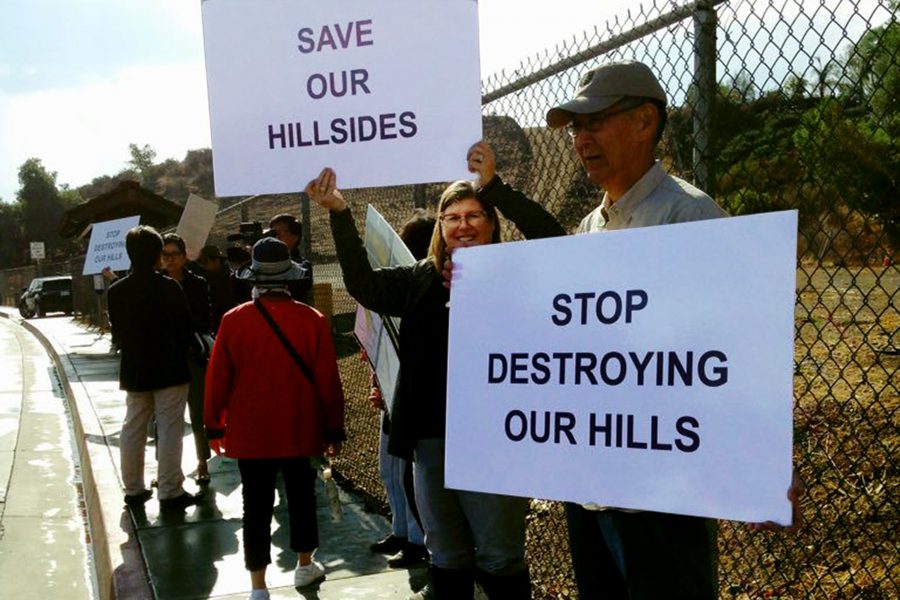Citizens smiled and appeared jovial as they held up signs of protest on Monday, Oct. 24, just across the street from campus on the southwest side of Grand Avenue and Amar road. The aesthetic region of land behind them, Mt. SAC’s ‘west parcel,’ is currently the center of controversy and was the reason that city residents–many of whom are city council members– decided to engage in protest against the college. The bright white signs held up in the direction of Monday morning traffic included legible font and simple messages such as, “Mt. SAC is destroying our hillsides.”
“They want to knock out all this land and put up a solar farm to power the school,” City Council Member Dennis Majors said, gripping onto his own sign. “But they don’t have the proper permits to do it. It really is a lack of community involvement.”
Major’s comments were echoed by those around him. “The college is, of course, subject to all city ordinances,” a man who declined to give a name said. “They’ve done things like this before, trying to take shortcuts and often agitating their own community around them.”
According to the San Gabriel Valley Tribune, discourse between the city and college regarding the proposed solar generating project began in September of last year, when residents were invited to the college to view visual art pieces of the desired architecture. The renderings were accompanied with explanations from the college as to why the 11-acre, 2.2 megawatt solar farm was a proper remedy for the fact that Mt. SAC is in need of plentiful electricity, being one of the largest community colleges in the state. The project was declared a major effort to reduce Mt. SAC’s “carbon foot print,” now required by law, offsetting one-third of the campus’ daily energy consumption and therefore making the power system much more reliable.
Opposition to the solar farm project, both by individual residents and the United Walnut Taxpayers, generally objects to the project becoming a reality because of the fact that it requires the destruction of the natural hillside habitat that currently makes up the west parcel.
“They don’t want those particular hills to be gone, however we have owned that piece of land since 1946,” Mt. SAC President William Scroggins said in the week following the protests. Scroggins touched on aspirations of the solar farm and its larger meaning relative to California’s environment.
“Along with our ownership of the west parcel, the college is over 10 years older than the city itself,” he said. “They now want this to be the Beverly Hills of the San Gabriel Valley. They don’t want their housing prices to go down, but we are in the process of living differently; we have an environmental issue in the world.”
Scroggins also addressed questions posed by his opposition, and said the college does not intend to use any of its recent improvement bonds to finance the project.
“We keep reminding that it would be funded through Proposition 39 Energy funds [a green-energy measure passed in 2012]. That region of land has been deemed unfit for any commercial use or extension of the college itself, which even if it was would result in an even worse traffic issue than we already have. We’ve thought this through.”
Three days before the protests, on Thursday, Oct. 20, the City of Walnut issued Mt. SAC a cease-and-desist order, stating that the college might have violated a court order pertaining to the start of construction.
“It’s different when it comes to green energy,” Scroggins said in response to the cease-and-desist order. “They were unsuccessful in that order and are unable to do so, because we’ve violated nothing.”
Walnut City Attorney Barbara Leibold told Scoggins in a letter dated Oct. 20, “To put it bluntly, we are stunned and gravely disappointed by your complete disregard of city regulations.”
However, Scroggins stands firm in the college’s plan.
“She has been provided with a copy of the law regarding this circumstance.”



